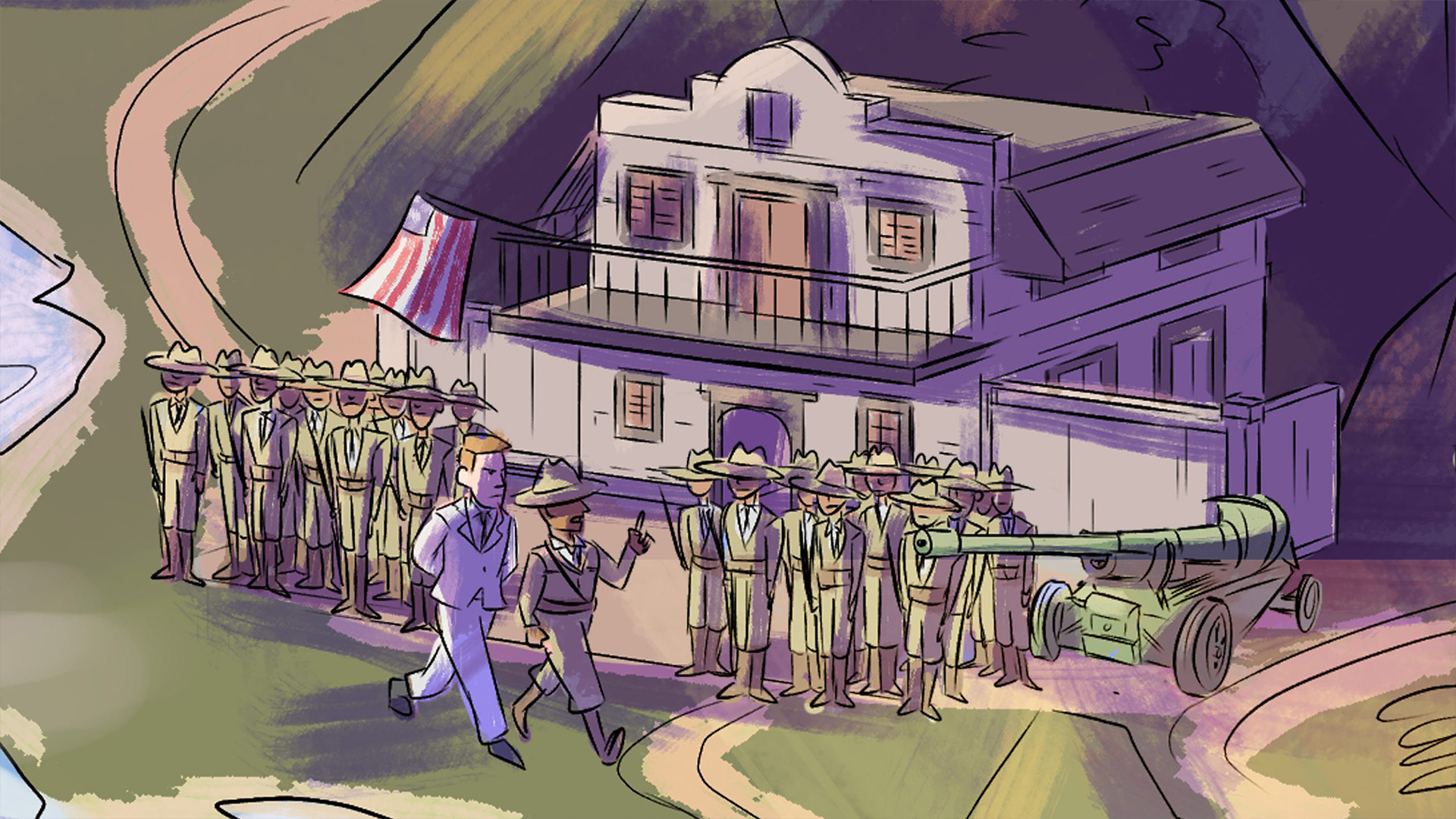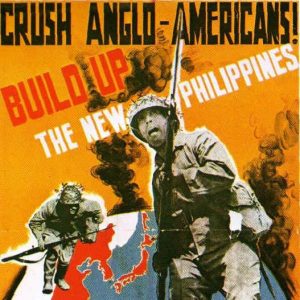Lesson Plan 7:

Defining Imperialism in the Philippines
In this lesson for middle school, students define imperialism and analyze the illustration to identify ways the U.S. exerted influence in the Philippines during the colonial period.
Summary
Students will define imperialism and analyze the American Colony illustration to identify ways the U.S. exerted influence in the Philippines. Students will also locate the Philippines on the map and its proximity to the United States and other parts of Asia.
This lesson introduces U.S. imperialism in the Philippines. Lesson 2: Confronting U.S. Imperialism in the Philippines goes deeper, using multiple primary sources, to examine how the U.S. shaped life in the Philippines during the colonial era, and how Filipinos negotiated this relationship.
Key Ideas
- The United States exerted influence in the Philippines through the military, through government, through schools, through religion, and through trade.
Time
30 minutes
Materials
- American Colony illustration: https://exhibition.dutytocountry.org/illustration-gallery/illus-040-american-colony/
- Map of Philippines in relation to United States and Asia (one can be found in Explainer 2: https://dutytocountry.org/project/explainer-2/)
- Defining Imperialism worksheet
Grade Level/Subject
Middle School Social Studies
Common Core: Middle School
- CCSS.ELA-LITERACY.RH.6-8.1 Cite specific textual evidence to support analysis of primary and secondary sources.
- CCSS.ELA-LITERACY.RH.6-8.7 Integrate visual information (e.g., in charts, graphs, photographs, videos, or maps) with other information in print and digital texts.
UCLA Public History Initiative | US History Content Standards
Era 7, Standard 2: The changing role of the United States in world affairs through World War I
UCLA Public History Initiative | World History Content Standards
- Era 7, Standard 5: Patterns of global change in the era of Western military and economic domination, 1800-1914
- Era 8, Standard 5: Major global trends from 1900 to the end of World War II
Instructions
1. Introduction (5 minutes): Find the Philippines
Start the lesson by having students locate the Philippines on a map. They can use a classroom map, globe, textbook, or the map found in Explainer 2 from Duty to Country. Lead students through some basic observations about the Philippines, such as:
- The Philippines comprises more than 7,000 islands.
- The Philippines are closer to Asia than to the United States.
- The Philippines are separated from the United States by the Pacific Ocean.
- Hawaii is about half-way between the west coast of the United States and the Philippines.
- The Philippines are close to major economic and political powers in Asia, including China (and its port of Hong Kong) and Japan.
Tell students that for almost 50 years, from 1898 until 1946, the Philippines were a colony of the United States. This means they were part of the U.S.’s new empire, transferring as a colony of Spain to a colony of the United States following the Spanish American War (along with Puerto Rico and Guam).
Optional, depending on level of students: read the Alfred Beveridge from Explainer 2 and ask students to identify the reasons he gives for why the United States would want to take over the Philippines as a colony (trade, competition with other nations, “last chance” for the U.S. to gain a foothold in Asia). You can also ask students to conjecture on the relative importance of Hawaii and the Philippines in the era of steamship travel (a stopping point to refuel trade or military ships to Asia).
2. Define Imperialism (10 minutes)
Part I of the worksheet provides a definition of imperialism, then asks students to brainstorm examples of what each part of the definition means. Students can complete Part I on their own, in pairs, or you can lead students as a group. Sample answers provided below (it’s okay if students can only think of 1-2 answers for each).
| Military Influence | Economic Influence | Political Influence | Cultural Influence |
|
|
|
|
3. Analyze “American Colony” Illustration (10 minutes)
Project or pass out copies of the “American Colony” illustration. Lead students through a close looking exercise to identify all the details of what’s going on. Start by asking students to locate and count the American and Philippines flags, noting what activities they are associated with (government, school, military, courthouse).
Then have students identify the different buildings and what they represent, various activities, and the differences between the roles and actions of Filipinos and Americans. Key details to identify: Agricultural production as well as mining or other extraction of raw materials, ships for trade as well as military control, Filipinos serving in the military but under white/American leaders, schools being taught by Americans (learning English, American ideals), Christian religion, courts and government set up in American style.
Differentiation strategies:
- Divide the class into four groups (military, economic, etc.) or work in groups of four with each person assigned a different aspect.
- For lower-level or tactile learners: allow students to cut up the illustration and paste details/ examples into the worksheet.
- For more advanced students, in addition to or rather than using the illustration, ask students to review the section “Colonial Period” in the Under One Flag exhibit to complete Part II. You can have students search for examples of each or divide the class into four and have each group focus on one part of the definition (military, economic, etc.), then share out.
Optional extension: Ask students to choose one detail in the illustration that makes them curious to learn more (e.g., American schools, agricultural products, Filipinos serving in the U.S. military). Have them review the “Colonial Period” section in Under One Flag to dig deeper and report back to the full class.
4. Conclusion (5 minutes)
Together as a discussion or independently in writing, ask students to respond to the questions in Part III of the worksheet.
Related Explainers
Defining Imperialism in the Philippines
Part I: Define Imperialism
Imperialism: The process by which a more powerful country influences or controls another country militarily, economically, politically, and/or culturally.
Directions: On your own, brainstorm a few examples of what military, economic, political and cultural influence could look like. Jot down a few words or draw a few pictures below for each term.
| Military Influence | Economic Influence | Political Influence | Cultural Influence |
|
|
Part II: “American Colony”
Directions: Look closely at the details in the “American Colony” illustration from the exhibit Under One Flag. See how many details from the illustration you can find to illustrate each aspect of imperialism
| Military Influence | Economic Influence | Political Influence | Cultural Influence |
|
|
Part III: Questions for Analysis
-
- What types of buildings are in the illustration, and what do they represent?
- Why are there so many ships in the illustration?
- Where do you see examples of cooperation between Americans and Filipinos?
- Where do you see examples of Americans taking advantage of Filipinos?
- From the illustration, what benefits did imperialism have for the United States?
- From the illustration, what benefits did imperialism have for the Philippines? What drawbacks did imperialism have for the Philippines?
- How do you think Filipinos felt about being a colony of the United States? What kinds of historical sources would reveal how Filipinos felt about American imperialism?


